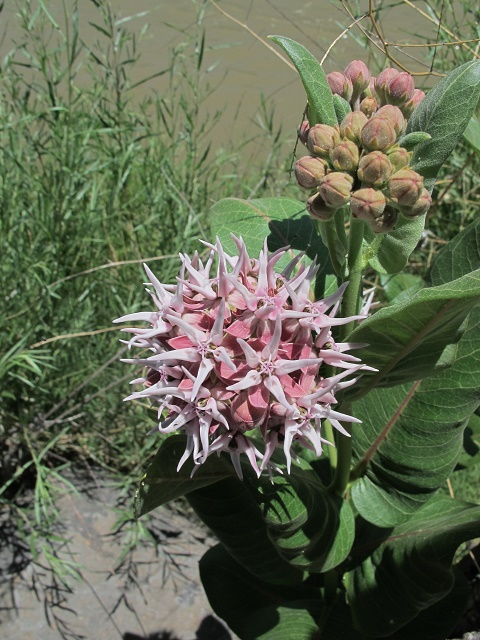|
By Felicia Fredd
Note: Since 2002, Felicia Fredd, owner of Enchanted Garden Productions, has specialized in residential landscape and garden design complementing both traditional and contemporary Santa Fe architectural styles while developing an ecologically and aesthetically rich design ethic. Visit Enchanted Garden Productions online For all the great press native plants have received, they are still hard to find relative to traditional ornamental nursery stock - particularly in terms of species diversity. The muddling of the very definition of a native plant is also problematic. We see more and more native cultivars, or 'nativars', casually represented as native plants. This is tricky because while they may be fundamentally native, they may not function normally as part of an ecosystem. If at least one of the reasons we want to use naturally occurring natives in the garden is as an important part of a specific local ecosystem, what exactly is the point of a modified 'nativar'? Why not just use another hardy ornamental? There are increasing studies indicating that alterations in host plant forms (flower patterns & colors, leaf arrangements, plant size, etc.) can have a profound effect on wildlife feeding and reproductive behavior. So, I want to cut to some things to consider if you're interested in cultivating truly local native plants, but maybe aren't sure which ones, or how to get them into your garden. I fear that some of these suggestions may seem a little madcap, but they are at least a few ways 'plant people' get good stuff. 1. Get your own information: The most useful and meaningful native plants live right near us - usually in the most neglected places. I know that getting correct information with regard to plant identification is challenging (Google Images is not a reliable way to do this) but if you can get a plant's precise scientific name, you can open up a world of important information about native range, history, compatible plant communities, cultivation requirements, etc. Knowledge of plants makes them more interesting and endearing. Fingers crossed, but I am planning on posting some solid leads on community resources for plant ID. It's important to approach sellers with exact scientific names. 2. Try what some are calling 'slow gardening'. For my own personal gardening, I get most of what I need by finding local native plants that need to be rescued from road beds, or from drainage swales that will eventually dry up on newly emerged plants, or by transplanting volunteers within my own property. I also ask for pups, cuttings, and collect seeds, etc. This kind of 'shopping' may not be for everyone - transplanting desert plants is a delicate business, seed collection, storage, and germination techniques are complicated, and making a spectacle of yourself collecting on the side of the road is uncomfortable (legal for seed only) - but it can work. Slow gardening could also include encouraging volunteers by setting up conditions for plants to germinate and grow themselves while you focus on something else. I've even used existing 'weeds' to function as seed traps, or 'connectivity modifiers' (https://www.nps.gov/articles/cany-conmods.htm) that encourage potentially desired plants from seed that just blows in. I don't do these things because I think it's cool, but because I really do need not only broadly native, but endemic, plants that I will not find otherwise. Things can look pretty shabby at first, but oh well. 3. Think about shifting your thinking. Design thinking expands your options; it's what allows you to 'frame' something you do have, or can get, beautifully. Maybe your perception of that less than perfectly gorgeous native plant already on your property can be improved by placement, color contrasts, a little pruning, distance, interesting massing, complimentary companions, etc. You could topiary your snakeweed, play up beautiful fall backlighting effects on those native asters, or go uber minimalist with just one or two bigger things. I think one of the most photographed parts of the Georgia O'Keeffe Home in Abiquiu, NM is the 'salita doorway patio' containing just a few old gnarly big sage. That sage, by the way, is Artemesia tridentata, and it must be about 70 years old by now. All things considered, I would say that finding your own local native plants is no more difficult, or time consuming, than conventional planting. In many ways, it's actually much easier, but it does require more consistent interest, observation, flexibility, and creative cultivating. I have a client who calls spending time evaluating the garden doing "a walk-about". I don't know where she got that from, but it's the most pleasant time we spend together in the garden. For anyone in the Abiquiu, NM area better convinced to just go and buy container plants this season, here are some local natives that ARE available as grown out container plants:
1 Comment
Francine
2/21/2025 06:56:34 am
Thank you. I love your article. This is the way I landscape and I say I’m going on a walk about when I stroll through my yard. Interesting. I’m new to Abiquiu so just starting out. What is the name of the plant in the picture. I had several in my yard last year. I hope we get rain like last year so the flowers bloom again.
Reply
Your comment will be posted after it is approved.
Leave a Reply. |
Submit your ideas for local feature articles
Profiles Gardening Recipes Observations Birding Essays Hiking AuthorsYou! Archives
October 2025
Categories
All
|

 RSS Feed
RSS Feed